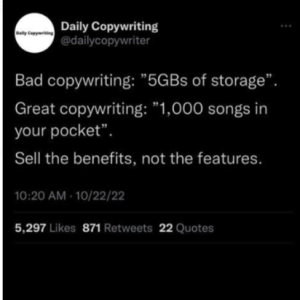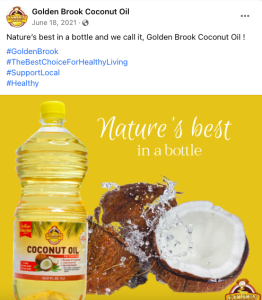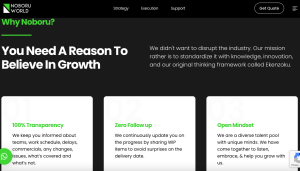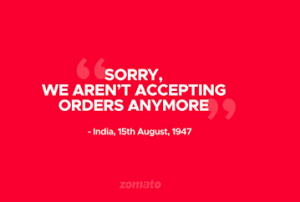Copywriting vs Content Writing: Difference & More
Ever wondered on the distinctions between “Copywriting vs Content Writing”?
- Content with a clear call to action can increase conversions by over 202% (Unbounce).
- Using emotional triggers in copy can increase conversion rates by up to 90% (AdEspresso).
The need for copywriting arose because businesses and organisations needed to convey information about their products or services to potential customers. The brands had to persuade customers to make a purchase.
Considering the competition, the brands had to establish a brand identity and tone of voice that appealed to their target audience.
A brand can stand out from the competition and capture consumers’ attention in a crowded market through content.
Let us read what is copywriting?
What is Copywriting?
Copywriting is the creation of written content with the goal of persuading a reader to do something, such make a purchase, sign up for a service, or interact with a business. It is a type of marketing where words are used to advance a good, service, or concept.
Let us look at the copy. The screenshot says bad copywriting could be just defining features but a good copywriting is creatively talking of benefits.

- The creation of persuasive ideas that can change consumer behavior makes copywriting an essential component of advertising.
- In order to boost conversions and raise brand awareness, this can involve creating headlines, taglines, product descriptions, commercials, email campaigns, social media posts, and other types of content.
- A thorough understanding of the target audience is necessary for effective copywriting, as is the capacity to create a message that connects with them and inspires action.
- In order to create content that grabs attention and motivates people to take action, creativity, research, and strategy are combined.
Read: Rules of Copywriting.
Examples of Copywriting
Let us read here the examples of copywriting:
Golden Brook Coconut Oil:
A health and wellness company, Nature’s Best is selling a new line of organic, plant-based supplements.

Their copywriting might include the following elements:
- Headline: “Nourish Your Body with the Power of Plants”
- Tagline: “Nature’s Best, in a Bottle”
- Product Description: “Our carefully crafted blend of natural ingredients provides essential vitamins and minerals to support a healthy lifestyle. No artificial preservatives, no synthetic additives, just pure, wholesome goodness.”
- Call to Action: “Order now and start feeling the benefits of nature’s best today.”
This copywriting uses persuasive language to communicate the product’s benefits and inspire the reader to take Action. The headline and tagline draw attention to the product’s unique selling point (its plant-based nature), while the product description provides more detail about the ingredients and their health benefits. The call to Action encourages the reader to make a purchase and provides a clear next step for them to take.
Apple:
An example of successful copywriting in branding can be seen in Apple’s “Think Different” campaign. The campaign was launched in 1997 and was designed to reposition the brand after declining sales.

- The main element of the campaign was a television commercial that featured black-and-white footage of influential figures such as Albert Einstein, Bob Dylan, and Martin Luther King Jr.
- In addition, the commercial was accompanied by the following voice-over:“Here’s to the crazy ones. The misfits. The rebels. The troublemakers. The round pegs in the square holes. The ones who see things differently. They’re not fond of rules. And they have no respect for the status quo.
- You can quote them, disagree with them, glorify, or vilify them. But the only thing you can’t do is ignore them. Because they change things. They push the human race forward. And while some may see them as the crazy ones, we see genius. Because the people who are crazy enough to think they can change the world, are the ones who do.”
- The campaign was hugely successful, and the commercial was widely recognized as the best. The “Think Different” message helped position Apple as an innovative, rebellious brand dedicated to changing the world through technology.
- In addition, the copywriting effectively communicated the brand’s values and established a connection with its target audience, helping to drive sales and strengthen its reputation.
What is Content Writing?
Content writing:
- Is used to inform, educate, or entertain a target audience.
- Focuses on producing high-quality, engaging content that offers some value to the reader.
- Can be in the form of blog posts, articles, white papers, case studies, ebooks, infographics, and more.
Content writing can also help brands to establish thought leadership in its industry. With content you can help increase website traffic, hence you have better search engine rankings, higher credibility, and more conversions.
Example of Content Writing
Let us read here the examples of content writing:
Noboru World
Content can be created for websites, blogs, product descriptions, emails, etc. Here is the website copy created for the digital marketing company.
It explains in detail why should the visitors trust and choose Noboru? The words chosen for the website explains the purpose the owners made the website.
Zomato
The food app that offers convenience to the people by ordering food play strategically with their content. The brand comes up with some real meaningful posts which is shared the most and encourages users to engage the most.

Some other types of content that the brand produces include:
Zomato is a food discovery and restaurant search platform that provides information on restaurants, cafes, and bars, as well as user-generated reviews and ratings. As such, Zomato’s content writing focuses on creating written material that provides valuable and engaging information to its users.
Here are a few examples of the type of content that Zomato might produce:
Restaurant reviews:
User-generated reviews and ratings of restaurants, cafes, and bars, along with photos and descriptions of the food and drinks served.
Food guides:
Informative articles on specific food-related topics, such as the best dishes to try in a particular city or the latest food trends.
Lifestyle articles:
Pieces that explore the relationship between food, culture, and lifestyle, such as articles on the best coffee shops for working remotely or the most romantic restaurants for a date night.
Recipes:
Original recipes for popular dishes, along with step-by-step instructions, tips, and suggestions for ingredient substitutions.
Food news:
Updates on the latest food-related news, such as new restaurant openings, menu launches, or food-themed events.
Zomato’s content writing aims to provide valuable information and inspiration to its users while promoting the restaurants and food-related businesses listed on its platform. The goal is to create a rich and engaging food-focused content ecosystem that will attract and retain users and drive traffic to the Zomato website.
Also Read: 30 Unique Content Marketing Ideas
Copywriting Vs Content Writing: Key Differences
Copywriting and content writing are two distinct forms of writing that serve different purposes. While both types of writing play essential roles in creating a successful online presence, they have distinct differences in their goals, tone, format, and target audience.
| Aspect | Copywriting | Content Writing |
| Purpose | Persuasive and promotional in nature. | Informative, educational, or entertaining. |
| Goal | Convince, sell, or trigger a specific action. | Educate, engage, or provide information. |
| Primary Focus | Emphasis on brevity and clarity. | Focus on depth, detail, and information. |
| Style | More sales-oriented, using persuasive language. | Primarily informative, less promotional. |
| Audience | Targeted towards potential customers. | Targeted towards a wider audience or niche. |
| Call to Action (CTA) | Promotes a CTA, such as making a purchase. | May include a CTA, but it’s often less direct. |
| Examples | Advertisements, product descriptions, slogans. | Blog posts, articles, guides, and reviews. |
| Keyword Usage | Emphasis on specific keywords for SEO. | Keyword usage may vary but not as prominent. |
| Tone | Convincing, persuasive, and focused on benefits. | Neutral, conversational, or subject-specific. |
| Length | Can be very short (a few words to a few sentences). | Variable, typically longer (500+ words). |
| Conversion Rate Focus | High emphasis on conversion rates and ROI. | Less direct focus on conversion rates. |
Final Word
Content writing is a crucial aspect when you talk of marketing. Content writing must be high-quality, engaging, and informative. Effective content writing can help businesses connect with their target audience and achieve their marketing goals.
Content writing is complex and multifaceted discipline that requires careful consideration of factors such as audience, tone, format, and goals. Brands and marketers need to understand their target audience’s unique requirements and create relevant, informative, and engaging content.
Content is a powerful tool which must educate the audience about your aims and purpose. Quality content builds authority and credibility of a brand. In case of any content needs, you can connect with us at hello[at]noboruworld.com
FAQ’s
Is a content writer the same as a copywriter?
-
- No, a copywriter is not the same as a content writer. Although both types of writers produce written products, there are clear distinctions between them in terms of their objectives, tonality, format, and intended audience.
- A content writer is in charge of producing excellent, interesting, and educational written products that are intended to instruct, inform, or entertain an audience. Building brand awareness, establishing the authority of the brand, and connecting with the target audience are the main objectives of content authoring. Blog entries, articles, social media posts, and other sorts of written content are all examples of content writing.
- A copywriter, on the other hand, focuses on writing content that is intended to sell a good or service. Advertising, sales letters, product descriptions, and other marketing materials frequently include copywriting, which has a more overtly promotional and attention-grabbing tone. By emphasising the advantages and distinctive characteristics of a product or service, copywriting aims to convert leads into sales.
Should I write content or copy?
The choice between writing content or copy will depend on your specific goals and your business needs.
Content writing may be the best way to build relationships with your audience. It helps to establish your brand’s authority, and engage your audience. You can entertain and educate your audience through content writing.
If your primary goal is to generate leads and drive sales, copywriting may be your business’s better choice. You can promote your products or services in an effective way using copywriting.
Both types of writing can complement each other, and the best approach for your business may be a combination of content paper and copywriting. However, understanding the differences between the two and choosing the best approach to your needs is key to achieving your marketing goals.



